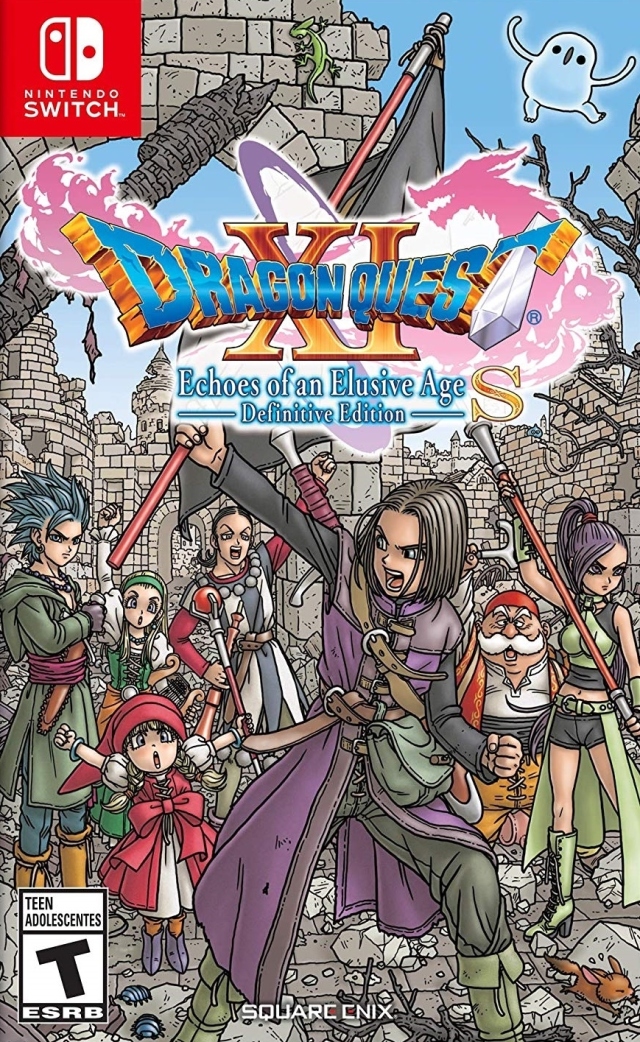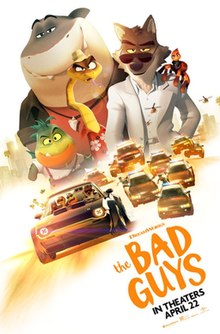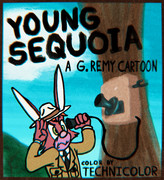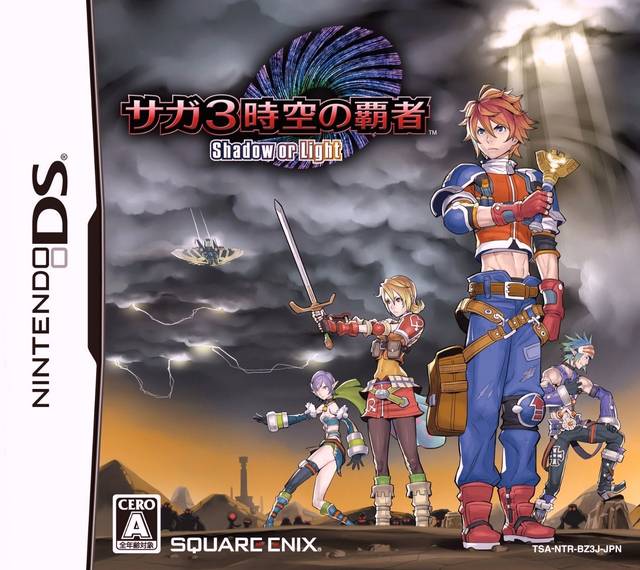
The Rainbough Connection
The original Dragon Quest for the NES, at the time in North America known as Dragon Warrior for legal reasons, was my very first Japanese RPG, and despite my fond memories of it, I didn’t play any of its sequels on the system until generations later, and the franchise would ultimately blossom in popularity outside the Land of the Rising Sun. The eleventh entry initially saw release on the PlayStation 4 and the Nintendo 3DS, although North Americans only got the former version, which would, akin to many other Square-Enix RPGs, see an updated rerelease, Dragon Quest XI S: Echoes of an Elusive Age – Definitive Edition, on the Nintendo Switch, with this particular incarnation’s extra content ultimately carried over to other platforms.
In the world of Erdrea, an army of monsters invades and destroys the kingdom of Dundrasil, with the protagonist whom the player names, an infant during the attack, spirited away in a basket down a river and raised in a village, the truth about his disposition as the Luminary eventually revealed, although many believe he is an evil entity. The Luminary embarks on a quest to clear his name and defeat the forces of darkness, meeting several companions on his way such as the thief Erik, a magically-de-aged sorceress and her standard-aged twin sister, the flamboyant Sylvando, and others. The characters are very much endearing, although there are many narrative tropes that are spoilerific, but the postgame definitely does have some good twists.
The translation very much does the eleventh entry justice, adopting the style of other contemporary Dragon Quest localizations, with the various peoples across the world, for one, having regional speech patterns characteristic of Earth’s own diverse inhabitants. For instance, the population of the village that adopts the Luminary have Cockney dialects, those of the Japanese-themed Hotto speak in haikus, and the academy to which he can give mini medals found throughout Erdrea has a French disposition. Furthermore, most characters from the world’s distant path have Renaissance-era speech similar to the Erdrick Dragon Quests. Pretty much the only major issue with the dialogue is the tendency of characters to shout the names of their abilities in battle, which sounds good in any language but English.
The Dragon Quest series has remained traditional in regards to the gameplay of its many entries, but there are key differences in Echoes compared to past titles. As Sentinels of the Starry Skies and the 3DS versions of the seventh and eighth entries had done, visible monsters on the overworld (or in XI’s case the various environments connecting towns and dungeons, similar to Final Fantasy X) and in dungeons replace random encounters, the Luminary able to approach them and slash them with his weapon to deal damage prior to the following battle. A cue adopted from EarthBound is that if the Luminary’s party’s levels are high enough, foes will run away upon noticing his approach.
One minor issue that mercifully doesn’t break the game is that even if the Luminary strikes the monster to deal preemptive damage, the enemy party may still get the first strike against the player’s characters, but luckily ample opportunities abound where the encountered adversaries don’t notice the human heroes or are “too stunned to move” as the eleventh entry, akin to its predecessors, relates. Typically, Dragon Quest games adopted a turn-based structure where the player selects commands for their party and allows them and the enemy to exchange blows in a round, with issues such as the random nature at times of turn order and the potential for foes to kill allies before inputted healing occurs.
However, Echoes of an Elusive Age adopts a turn-based structure similar to the mentioned tenth Final Fantasy (not to mention a few other JRPG franchises such as the Atelier games), where the player’s characters receive independent input from the player of their respective commands (though they can alternatively allow the in-game AI to dictate one, a few, or all characters’ orders), and when players choose one of the many available options for battle, including attacking with an equipped weapon, defending to reduce damage until their next turn, using an MP-consuming spell or ability, consuming an item from their inventory, they immediately execute their action, with the character needing to wait until other allies and foes have taken their turns before their next session.
Unfortunately, one major quality-of-life feature present in the turn-based JRPGs from which Echoes derives its battle structure is a gauge indicating character and enemy turn order. Regardless, there are many other aspects that help the eleventh installment break the mold such as adjustable battle speed that can make even the most daunting encounters go by more quickly, and while the player can move around allies during their turns, this is superficial (except for when players wish to escape skirmishes by moving a character to the edge of the battleground, which I never did), and largely for the purpose of getting screenshots.
Victory nets all surviving characters within and without the active party of up to four characters experience for occasional leveling, money for purchasing new equipment and consumables, and the occasional item. Defeat of the Luminary’s party, on the other hand, gives players a few options such as reviving at the last save point or in the last town saved, with these options requiring half the money the player is carrying at the time, and fully restoring all characters. As in prior entries, however, the player can largely nullify this death penalty by banking their money in thousand-gold increments at banks typically accompanying inns.
Whenever a character levels, most of the time they receive skill points the player can invest into hexagon-tiled grids to unlock active and passive skills of different specialties, such as proficiency with specific weapons and/or special abilities for said armaments. Unlocking one tile unlocks those adjacent except those that questions marks indicate, which necessitate that all tiles contacting it be unlocked. There are occasional secrets such as bonus points for unlocking certain tiles, and there are consumables that increase a character’s skill points by one. At churches, the player can completely undo skill point investment in part of a character’s grid and redistribute them, useful if they want to do things like wield different types of weapons.
Another key part of the game mechanics is the Fun-Sized Forge that the player receives early on, where they can use ingredients in conjunction with recipes found throughout the world to create new weapons, armor, and accessories. Doing so involves a minigame where each area of the piece in production symbolizes an area the Luminary can strike with his hammer, each having a gauge that increases when struck. The hero has a number of focus points that increase with his experience levels, with “Flourishes” costing more alongside regular strikes that do things like strike multiple tiles. The goal is to get each gauge in an area towards their respective ends, with items in the end coming out in poor, standard, or superior quality depending upon how far the gauges are.
Successfully forging an item of standard or superior quality earns the player not only the produced weapon, armor, or accessory, but also Perfection Pearls that the Luminary can use to enhance the quality of currently-owned armaments. While one would perhaps think that making the most of the system would necessitate using a guide, especially when it comes to finding rarer ingredients necessary to forge the best equipment possible, I never needed to, since one major convenience the eleventh entry has is that when you discover a new material, the in-game compendium shows other sources of said material, with some I initially acquired through gambling at one of the two casinos.
Another notable facet of the game mechanics is the mount system, where, after the player exterminates a monster visibly sparkling on the battlefield as well as in battle, the means of transportation whatever “intelligent” being was riding becomes available for the Luminary and his party to ride. These methods of conveyance can allow players to ascend walls via vertical footprints (in the case of skeleton beetles), fly to a higher elevation, and even displace monsters that are weaker than the player’s party, although contact with monsters more powerful than they are triggers standard encounters.
Ultimately, while some would argue that Dragon Quest XI’s gameplay is “generic”, that couldn’t be further from the truth, given its influence by more contemporary (if that term would still apply) Japanese RPGs such as Final Fantasy X, with the refinements to the Yuji Horii franchise’s core game mechanics making a world of difference. The absence of a turn order meter is perhaps the most significant issue with the battle system, especially when changing the active party, and while changing an active ally’s companions during their turn doesn’t waste said member’s turn, replacing them with another character progresses to the next character or enemy’s turn. Regardless, the evolution of the Dragon Quest gameplay in the eleventh entry is definitely for the better.
Control also contains more refinement than in prior series entries. The menus are easily navigable, item and spell effects are present in-game, the player can see how equipment they wish to buy increases or decreases their respective stats, in-game maps for towns, dungeons, and the areas in between exist, and the narrative objective is visible whilst viewing the map of the area where the Luminary and his party are. Interaction contains polish to the point where I finished the game, even the postgame content, without even referencing a guide. There are some issues such as the dialogues and confirmations when shopping, not to mention a bit of loading, but otherwise, Echoes interfaces well with players.
The late Koichi Sugiyama, as usual, did a fantastic job with the soundtrack, given many solid original tracks such as the theme of the overworld areas in between towns and dungeons, not to mention the beautiful town theme and its nighttime equivalent, with many other tracks having twilight variations as well; the standard and boss battle themes also contain excellent bombastic orchestration. There are many tracks filched from prior franchise entries, such as the Medal Academy music that uses the fifth entry’s castle music, and the theme of Hotto using the third game’s oriental track, but otherwise, Sugiyama was a class act that will definitely be difficult to rival for future series entries. The English voicework also helps the game more than hurts, although some such as Veronica’s can be shrill at times.
The eleventh entry utilizes a visual style combining realistic and anime elements, with the characters and monsters, as with prior installments, having designs from Dragon Ball creator Akira Toriyama, who as always did a good job, even if there are a great many reskins among the various adversaries the Luminary and his companions battle. The colors and environments look nice, as do the ability effects in combat and the general animation of everything, although there is a heavy degree of popup with regards to the environmental elements, not to mention jaggies and pixilation that are most noticeable close-up. Regardless, the game is definitely beautiful.
Finally, Echoes can be a fairly lengthy game, especially if the player partakes in the countless sidequests, completion of all compendia, the sizeable postgame content, and the acquisition of all Accolades for accomplishing certain things such as slaying a certain number of monsters, gaining a certain amount of money, and so forth. Restrictions known as Draconian Quests also add difficulty to new playthroughs to enhance lasting appeal, although finding all Accolades may require use of a guide since there’s no in-game indication of how to uncover them.
Overall, Dragon Quest XI paradoxically takes a few small and major steps forward for the franchise, continuing to maintain many series traditions such as its turn-based gameplay, although that in particular features many significant differences over prior entries to give it new life. The eleventh entry is also quite user-friendly, the story is endearing, Koichi Sugiyama’s final composition and the voice acting are mostly solid, and the game graphically shines. There are a few issues with regards to the occasional lack of quality-of-life features such as a turn order meter in combat, not to mention the recycling of music from older Dragon Quests, although Echoes of an Elusive Age is undoubtedly one of the franchise’s crown jewels.
This review is based on a playthrough to the postgame ending of a physical copy borrowed by the reviewer.
The Good:
+Great combat and control.
+Endearing narrative and characters with superb translation.
+Superb audiovisual presentation.
+Plenty lasting appeal.
The Bad:
-Battles lack some key quality-of-life features.
-Story has derivative elements.
-A lot of recycled music from past games.
-Some visual imperfections.
The Bottom Line:
One of the best, if not the best, entries of the Dragon Quest series.
Score Breakdown:
Platform: Nintendo Switch
Game Mechanics: 9.0/10
Controls: 9.5/10
Story: 8.5/10
Localization: 9.5/10
Music/Sound: 9.0/10
Graphics: 9.0/10
Lasting Appeal: 9.5/10
Difficulty: Varies
Playing Time: 96+ Hours
Overall: 9.5/10











